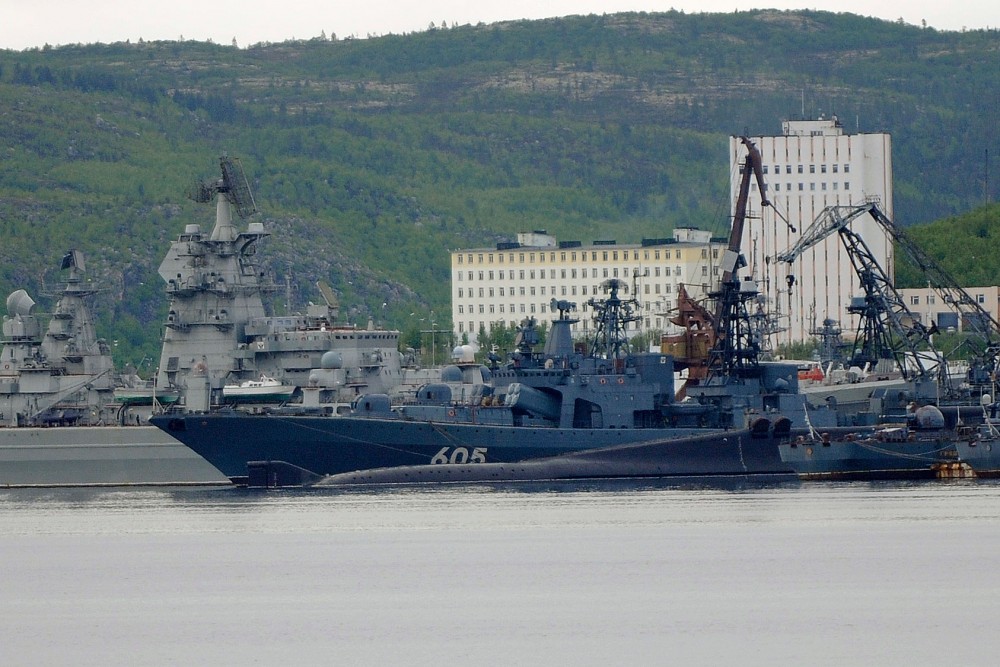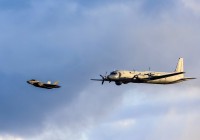
With Finland in NATO, Russia restructures forces, depriving the Northern Fleet of the status as a military district
ADVERTISEMENT
On October 8, the Defense Ministry presented a draft presidential decree that would deprive the Northern Fleet of its status as a military district.
If approved, the Northern Fleet will be absorbed into a renewed Leningrad Military District following the decision to split the Western Military Districts and reactivate Moscow and Leningrad like it was before 2010.
The Northern Fleet Joint Strategic Command was given the status of a military district on 1 January 2021, a move seen to mirror the importance of Russia’s Arctic regions. In geographical size, the Northern Fleet is the third largest of the five military districts.
Defense Minister Sergei Shoigu last December said “retaliatory measures are required” as both Finland and Sweden join NATO.
“Given NATO’s desire to build up military potential near the Russian borders, as well as to expand the North Atlantic Alliance at the expense of Finland and Sweden, retaliatory measures are required to create an appropriate grouping of troops in Northwest Russia,” Shoigu said.
Prepares for full-scale
Katarzyna Zysk, a professor with the Norwegian Institute for Defence Studies (IFS), agrees that the ongoing restructuring is linked to the fact that Russia has got a much long land-border with NATO.
“The dividing of the Western Military District into the Moscow Military District and Leningrad Military District, as well as possibly subordinate the Northern Fleet to the latter, is a response to NATO enlargement in Northern Europe and expected further changes in allied defense posture,” says Zysk.
She explains that seen with Russian eyes, it is necessary to improve the ability to fight full-scale land operations along the Finish border and in the Baltic theatre of military operations
Restructuring of the command and personnel organization comes as a result, Zysk says.
“At large, these plans continue the trend to a partial return to the Soviet era military organization of forces, effectively rejecting the military reforms implemented by the former Defence Minister Anatoly Serdyukov between 2008-2012.”
Professor Zysk believes that ultimately, “the objective is to make Russia capable of facing a possible confrontation with NATO, which is the best way to strengthen strategic deterrence.”
Russian Military Analyst Yuri Fedorov also asses that reestablishing Leningrad Military District is designed for warfare in “the Baltic countries and Finland”. These areas “must be saturated with troops,” he wrote in his Telegram channel.
Government-operated Rossiskaya Gazeta on Sunday published an article underlining that depriving the Northern Fleet of the status as a military district “will in no way diminish the importance,” but actually opposite as forces will be “optimized, and becoming more flexible and efficient.”
Aftermath of South-Ossetia invasion
Katarzyna Zysk compares what now happens with the aftermaths of Russia’s invasion of Georgia in 2008.
“The extensive Russian failures and losses in Ukraine have spurred the process of a major military change in Russia – just like earlier the shock of weaknesses exposed in the war in Georgia in 2008 pushed a major military reform back then.”
Zysk suspects we are only the start of a restructuring of Russia’s armed forces.
“The process is fanned by both the swiftly changing geopolitical situation along the Russian border and the conclusions drawn from the battlefield in Ukraine,” she says and points to the country’s plans to significantly increase the size of the army, to 1.5 million, including adding more than a dozen new divisions.
“It will be hard to achieve that as long as Russia is fighting the war in Ukraine, but this should be seen as a long-term objective,” the professor says.

Today’s Northern Fleet Military District includes the regions of Murmansk, Arkhangelsk, Komi Republic and Nenets Autonomous Okrug.
When Russia launched its all-out war on Ukraine in February last year, the Arctic brigades of the Northern Fleet lost hundreds of soldiers on the battleground north of Kharkiv during the first days.
The 200th Brigade is located in Pechenga, some 10 to 15 kilometers from the border with NATO-member Norway.
ADVERTISEMENT
The Barents Observer Newsletter
After confirming you're a real person, you can write your email below and we include you to the subscription list.









